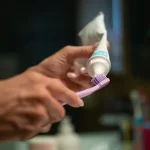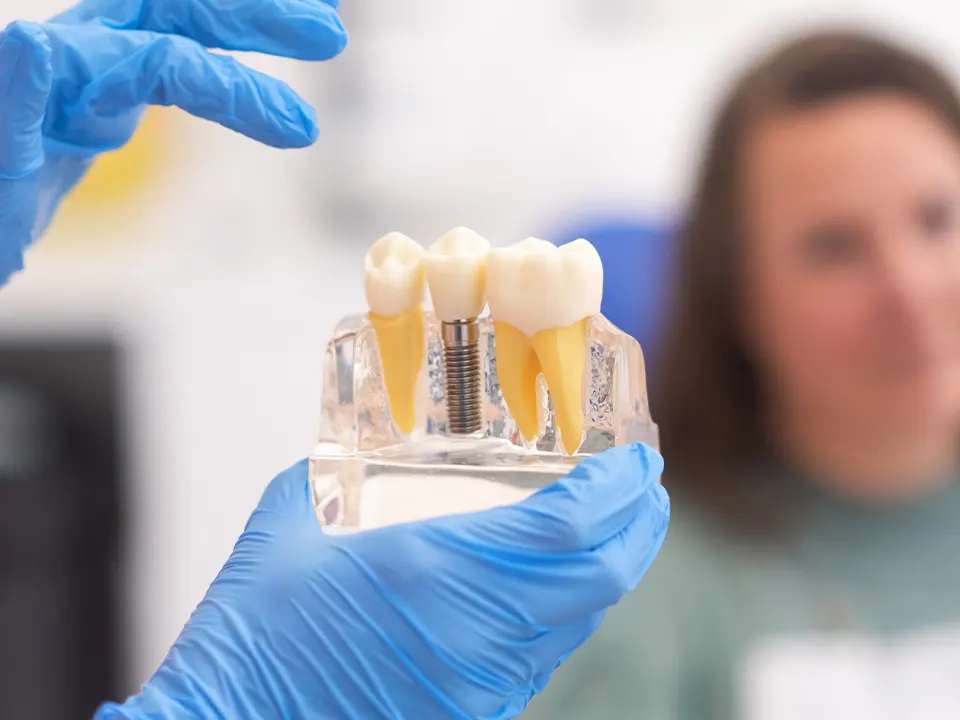
How Visiting a Children’s Dentist Can Benefit Your Child
September 20, 2024
Choosing the Best Toothpaste for Your Dental Needs
November 26, 2024Having a tooth extraction done can feel nerve-wracking, but with the right follow-up care, healing can be smooth and comfortable. Knowing what to expect and following key steps for aftercare can significantly reduce complications and speed up recovery. Whether you’ve had a simple extraction for a decayed tooth or a surgical extraction for wisdom teeth, we’ve laid out everything you need to know about post-extraction care.
Types of Tooth Extractions and Differences in Aftercare
There are generally two categories of tooth extractions: simple extractions and surgical extractions. The aftercare steps can differ slightly depending on which procedure was performed.
- Simple Extractions: These are typically performed when the tooth is visible above the gum line and can be easily removed. After a simple extraction, you may experience mild discomfort and swelling, which usually subsides within a few days. Aftercare focuses on keeping the area clean, using a gauze pad to control bleeding, and avoiding any strenuous activities that could disturb the extraction site.
- Surgical Extractions: This more complex procedure is often needed for wisdom teeth or teeth that haven’t fully erupted. Since surgical extractions require incisions in the gum tissue and sometimes removal of bone, healing may take longer, and additional care is needed. Swelling, bruising, and increased tenderness are common, and pain relief options may include prescribed medications. After a surgical extraction, ice packs and a soft food diet are especially helpful.
In either case, follow your dentist’s specific aftercare instructions, as each patient’s recovery and needs may vary. If you have any concerns during recovery, don’t hesitate to call us at Ovation Dental for guidance.
Immediately After the Extraction: First Steps for Care
Once your dentist has finished removing the tooth and numbs the area, the first stage of healing begins. During this period, it’s common for the extraction site to be soaked with blood for a short time as your body works to clot and heal the wound. Your dentist or oral surgeon will place some gauze padding over the extraction site, and ask you to bite down on it to help control bleeding. Keeping pressure on the gauze for 30–45 minutes is essential as it encourages a clot to form in the tooth socket.
Key Tips
- Avoid spitting or rinsing immediately, as this can dislodge the clot.
- Don’t drink through a straw for the first 24 hours; the suction can disturb the clot and lead to dry sockets.
Managing Pain and Swelling
Some degree of pain and swelling are not unusual after a tooth extraction. Our team may suggest over-the-counter pain relievers or prescribe antibiotics to minimize the risk of infection as part of your after care plan. Swelling often peaks within the first 48 hours, so applying a cold pack on the outside of the cheek in 10–15 minute intervals can significantly ease discomfort.
Additional Tips
- Alternate between cold packs and resting periods during the first day.
- Keep your head elevated when lying down to reduce the potential for discomfort and swelling in the affected area.
- Don’t touch the extraction area with your fingers or tongue – even though you may want to.
What to Eat and Drink After a Tooth Extraction
One of the most important things to focus on post-extraction is your diet. Sticking to soft foods and staying hydrated will aid healing without aggravating the area.
Suggested Foods
- Smoothies: Packed with nutrients, smoothies are a great option, but avoid using straws.
- Mashed Potatoes and Yogurt: These are smooth, easy to swallow, and won’t irritate the gums.
- Applesauce: Soft and cool, applesauce can feel soothing and is gentle on the gum tissue.
- Broth and Soups: Soups are nourishing, but avoid hot temperatures until you’re healed.
Avoid hot, spicy, crunchy, or chewy foods for the first few days, as they can delay healing or cause discomfort.
Oral Hygiene After Extraction
Keeping the area clean without disturbing the clot is essential. For the first 24 hours, avoid brushing or rinsing near the extraction site. After that, gentle care can prevent infection and promote healing.
Hygiene Tips
- Start rinsing with a warm saltwater solution (1/2 teaspoon of salt in a glass of warm or room temperature water) after the first 24 hours. This helps keep the area clean while reducing the risk of infection.
- Brush and floss as usual, but be cautious near the extraction site.
- Avoid mouthwashes with alcohol, which can irritate the area.

Watch for Signs of Complications
While most people heal well after a tooth extraction, it’s important to know what signs could indicate a problem. Dry sockets can develop if the clot is dislodged, leading to pain that radiates to the ear or jaw. Other complications might include persistent bleeding, severe pain, or signs of infection like a fever.
When to Call Your Dentist
- Persistent bleeding beyond 24 hours
- Increasing pain or swelling after the initial two days
- Bad taste or foul odour from the extraction site
- Any signs of fever
If you notice any of these symptoms, call your dentist or oral surgeon for guidance. Early intervention can prevent further complications.
Healing Timeline and Follow-Up
Generally, the initial healing process takes about 1–2 weeks, but it may vary depending on the tooth extraction type and individual healing factors. During this time, it’s essential to protect the clot and give your body the best chance to heal. For wisdom teeth or more complex extractions, your dentist may recommend additional follow-up appointments to monitor the healing process.
Preventative Tips for Future Oral Health
Regular dental checkups and good oral hygiene can prevent many dental issues, reducing the likelihood of future dental extractions due to tooth decay or gum disease. Here are a few ways to protect your oral health moving forward:
- Schedule dental checkup appointments and cleanings every six months (or at the interval suggested by your dentist).
- Brush twice a day and floss to remove food particles and prevent plaque buildup.
- Consider fluoride treatments during routine cleanings for added protection against cavities.
Final Thoughts
Recovering from a tooth extraction doesn’t have to be a stressful experience. By following these aftercare steps and maintaining regular communication with your dentist, you can ensure a smooth and comfortable healing process.
Whether you’re dealing with gum disease, tooth decay, or simply need a routine extraction, the team at Ovation Dental is here to support you. Our dedicated dental team is just a call away, ready to help you every step of the way.
Schedule Your Follow-Up Today
If you have any concerns or questions about post-extraction care, don’t hesitate to reach out. Contact Ovation Dental today to discuss your needs or schedule a follow-up visit. We’re committed to providing the top level of care to help you achieve a healthy, confident smile.



